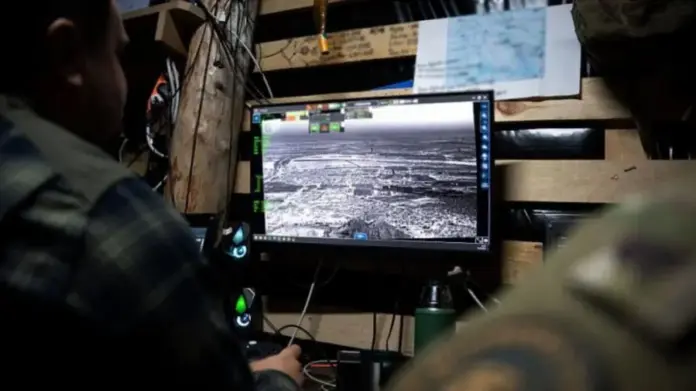Romania installs an advanced drone defense system provided by the United States as part of NATO’s efforts to secure its eastern flank. The system, called Merops, already operates in Poland and undergoes evaluation for use in Denmark. The presence of this system enhances the security of the Romanian–Moldovan perimeter and reduces the risk of stray drones from the war zone or reconnaissance operations entering the country’s airspace.
The American-made Merops system, compact enough to fit in the back of a medium-sized pickup truck, detects and intercepts drones using artificial intelligence, even when satellite communications or electronic signals experience jamming.
NATO military officials confirm that the system operates not only in Poland and Romania but also in Denmark, as part of a broader effort to strengthen the Alliance’s eastern defenses. They aim to make the border with Russia — from Norway to Turkey — so well protected that Moscow will hesitate to cross it.
The need for this system grows urgent after, in early September 2025, around 20 Russian drones entered Polish airspace. Fighter jets costing millions of dollars scrambled to intercept drones worth only tens of thousands. Romania reported a similar incursion. Suspicious drones also forced temporary closures of airports in Copenhagen, Munich, Berlin, and Brussels. Observers spotted unidentified flights near military bases in Belgium and Denmark as well.
Although analysts could not always confirm the origin of these drones, they recognize the need to strengthen defenses. A prolonged drone-based conflict — or a full-scale war like the one in Ukraine, bordering the Republic of Moldova — would quickly deplete Western budgets and missile stockpiles.
How Does Merops Work
“This system provides extremely accurate detection. It locates drones and neutralizes them at a much lower cost. It’s far cheaper than sending an F-35 into the air to shoot down a drone with a missile,” explained Colonel Mark McLellan, Deputy Chief of Operations at NATO Allied Land Command.
Drones fly at low altitudes and slow speeds, which makes traditional radars calibrated for missiles struggle to detect them. Operators can mistake them for birds or civilian aircraft. NATO officials say Merops eliminates these “blind spots.” “Basically, Merops uses drones against drones,” McLellan added. The system strikes the target directly or provides coordinates to ground or air forces for neutralization.
Brigadier General Thomas Lowin, also Deputy Chief of Operations at the same command, noted that Merops gives commanders “the necessary time to assess the threat and decide whether to engage.” The system protects both critical infrastructure, such as airports, and troops deployed in combat zones.
The first Merops units already operate along the borders of Poland and Romania, and Denmark has also decided to acquire the technology. This deployment marks the first stage of a 2–5-year plan, as companies develop new “drone-vs-drone” systems and anti-drone missiles — a new generation of defense technology.
Romania’s emergence as a key node in NATO’s air defense network provides Chisinau with a safer buffer zone protected by Western technology and capable of rapid response in case of threats. In a context where drones dominate modern warfare, the implementation of Merops brings not only enhanced protection for NATO but also an additional guarantee of stability for one of the most exposed non-member countries of the Alliance.
At the NATO–Industry Forum 2025, participants held extensive discussions on strengthening the eastern flank. Romanian President Nicusor Dan pledged an even stronger role for his country. Meanwhile, NATO Secretary General Mark Rutte, who attended the event in Bucharest, thanked Romania — in interviews with journalists from across the Prut — for its support of the Republic of Moldova.



